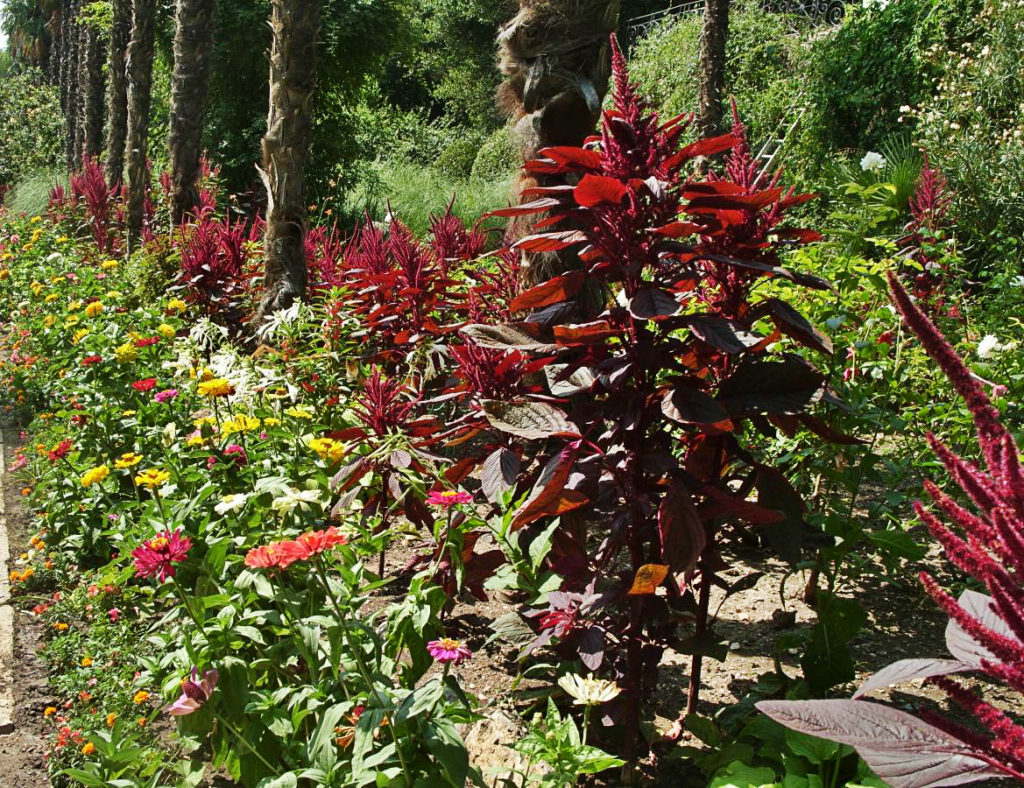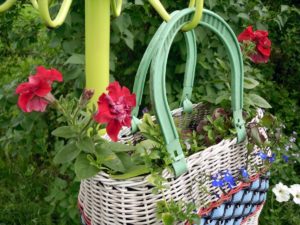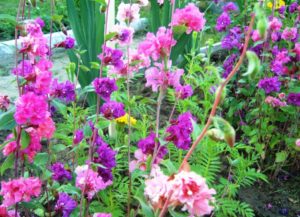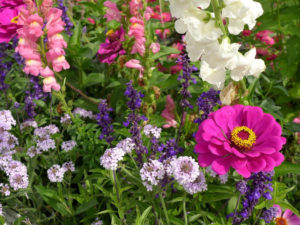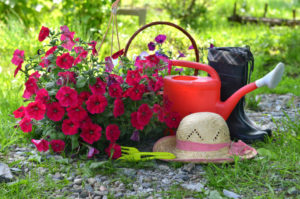Amaranth of the Amaranth family is an annual plant with an erect stem 70-150 cm (2.3-4.9 ft) high. The leaves are ovate or oblong-ovate. The flowers are collected in purple-red, thick spike-paniculate inflorescences 20-50 cm (7.9-19.7 ft) high; they bloom in August-September. Fruits-boxes; ripen in September-October.
Amaranthus cruentus is characterized by brownish-red leaves and drooping or vertical inflorescences with drooping tips. Decorative varieties:
- Zwergdackel — height of 25-30 cm (9.8-11.8 in), inflorescence dark red;
- Gruene Fackel — height of 25-30 cm(9.8-11.8 in), the inflorescence is bright green;
- Pygmy Torch — this is a dwarf chestnut in bloom;
- Rotterdom — of a height of 80-85 cm (2.6-2.8 ft), the inflorescence is dark green, the leaves are dark purple.

Amaranth tricolor is characterized by narrower, sometimes wavy leaves of tricolor color (red, yellow and green), especially bright at a young age, and ascending strongly branched inflorescences. Decorative varieties:
- Flaming fountains-drooping leaves, carmine-red, dark-red, bronze;
- Illumination-up to 45 cm (1.5 ft), leaves from oval to elliptical, upper-light pink-red, lower-copper-brown;
- Wool of Joseph-oval or elliptical leaves, upper — golden and dark red, lower-mixed: green, yellow, chocolate-bronze.
Amaranth caudate is characterized by hanging thin inflorescences, similar to tails. Decorative variety:
- Viridis-green inflorescences, fading to cream color.
Due to the large size, dense plant architectonics, amaranth is used in both low and high borders or as cool plants. They are good in group plantings, mixborders, in flower beds or against the background of the lawn. They can be used as focal (especially red-leaved varieties that stand out during the entire growing season) or companion plants.

Amaranth is especially valuable for its late flowering. By this time, the garden still has cabbage crops, with which the red-leaved forms of amaranth create bright contrasts, and beets, with which they form harmonious combinations.
Sowing is best done in nests (3-5 seeds) with a distance of 20-25 cm (7.9-9.8 in) between the preferred light, fertile soil.
Amaranth is not only an ornamental plant, but also a food, feed, and medicinal plant. Young leaves, shoots (including for making soup, mashed potatoes, vegetable stew, seasonings for pickles), seeds (used as cereals, crushed flour) are used for food. For therapeutic purposes, seeds are used for vitamin deficiency, anemia, neurosis, inflammatory processes in the genitourinary system, hemorrhoids, fatigue, obesity, gastrointestinal disorders.
